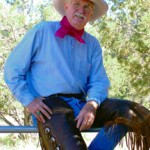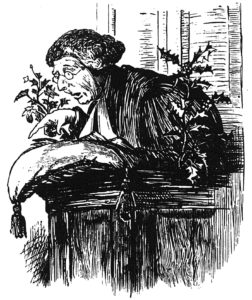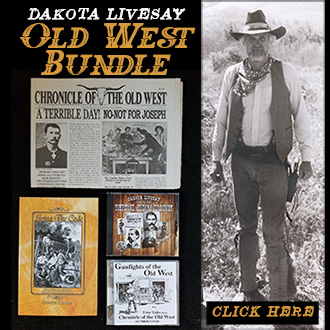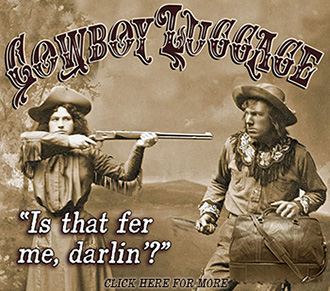 Victorian Wedding Dress in the United States; A History Through Paper Dolls, Norma lu Meehan and Mei Campbell, Texas Tech University Press, (800-832-4042), 32 Pages, $12.95, Paperback.
Victorian Wedding Dress in the United States; A History Through Paper Dolls, Norma lu Meehan and Mei Campbell, Texas Tech University Press, (800-832-4042), 32 Pages, $12.95, Paperback.
This unusual book is a wonderful collectors’ item for anyone interested in vintage clothing, in particular the wedding dress. Back in 1850, the Godey’s Lady’s Book featured a bridal gown on the cover, and that seemed to spark an unending fascination for brides in our country that continues today. The authors point out that in the United States, wedding gowns are a $160 billion dollar annual business.
This book uses paper dolls as models, and shows some magnificent wedding gowns designed and worn by American brides between the years 1859 to 1899. The authors point out that white was not always the chosen color for wedding dresses. It was Queen Victoria of Britain who wore a white satin gown when she wed Prince Albert of Saxe-Coburg in 1840. While the queen chose white, thereby setting a fashion trend, it would be many years before most women would wear the white gown because their wedding dresses were to be worn for numerous occasions after their wedding as a matter of frugality.
Co-author Meehan is a fashion illustrator who volunteers as costume curator at the Northern Indiana Center for History. Co-author Campbell is curator of ethnology and textiles at the Museum of Texas Tech University. Combining their talents and expertise, they have chosen twenty wedding dresses selected from both collections to give readers a unique opportunity to marvel at the lovely designs and intricate workmanship of these gowns.
Dresses in this collection are carefully sketched from the original garment; some photographs are included adding a personal touch showing the brides themselves. Each dress is unique not only in color, workmanship and design, but a brief history of the bride, and, or the wedding is included.
For instance, in 1871 Maggie Knott married Dr. Samuel L. Kilmer in South Bend, Indiana. She wore a two-piece, ice-blue silk-brocade gown. In 1882, Florence Miller married Frank Dwight Austin in Leavenworth, Kansas. The bride’s dress was made in Paris, France and cost an astonishing five hundred dollars. It became an Austin family heirloom worn fifty-five years later by a granddaughter. In 1893, Alice Rhawn wed Mr. Clement Studebaker, Jr., one of the founders of the Studebaker Corporation. Their wedding was a society event in Philadelphia social circles. The mansion the Studebakers occupied after the wedding is now on the National Register of Historic Places.
On and on, readers get to examine twenty gowns while reading about the women who wore them. Descriptions include satin panniers, full bustles, pleated hems, long-trained skirts, pointed front bodices, sleeve ends trimmed in Spanish blonde lace, flounces and peplums. Wool, alpaca, satin, ivory brocade silk, chiffon, crepe, velvet, ostrich feathers, beadwork, Chantilly lace and bands of pearls delight the eye.
Not every bride in the Old West had such wealth and opportunity. Thus, we usually read about lugging water, milking the cow, rattlesnake bites, Indian attacks, hog ranches and saloon shootouts. However, this book reminds us that there has always been wealth and privilege; not all women were ranch girls, dance hall queens or homesteaders. Writers seem to depict women in hardship roles and poverty as a source of Old West entertainment, but here we see that refinement, manners, delicacy and careful attention to detail also had its place in our American Western experience. The history of these magnificent gowns reminds us about the other side of life.
You can get you copy of Victorian Wedding Dress HERE.
Editor’s Note: The reviewer, Phyllis Morreale-de la Garza is the author of many published books, including Silk and Sagebrush: Women of the Old West, published by Silk Label Books, P.O. Box 700, Unionville, New York 10988 (845-726-3434) www.silklabelbooks.com
*Courtesy of Chronicle of the Old West newspaper, for more click HERE.
 Dakota Livesay gives us a great story about a good doctor, …well maybe! Here is more info on Dr. George Goodfellow:
Dakota Livesay gives us a great story about a good doctor, …well maybe! Here is more info on Dr. George Goodfellow:



 Beans were a staple of the cowboy’s food, particularly when he was on the trail. Beans could be easily stored and they were inexpensive. And although it probably wasn’t known, Red Bean Pie is also nutritious.
Beans were a staple of the cowboy’s food, particularly when he was on the trail. Beans could be easily stored and they were inexpensive. And although it probably wasn’t known, Red Bean Pie is also nutritious. Victorian Wedding Dress in the United States; A History Through Paper Dolls, Norma lu Meehan and Mei Campbell, Texas Tech University Press, (800-832-4042), 32 Pages, $12.95, Paperback.
Victorian Wedding Dress in the United States; A History Through Paper Dolls, Norma lu Meehan and Mei Campbell, Texas Tech University Press, (800-832-4042), 32 Pages, $12.95, Paperback.



